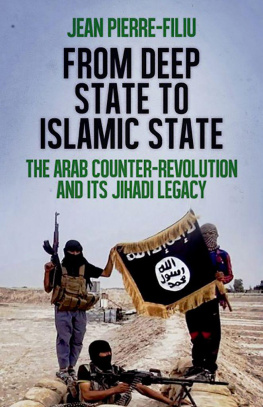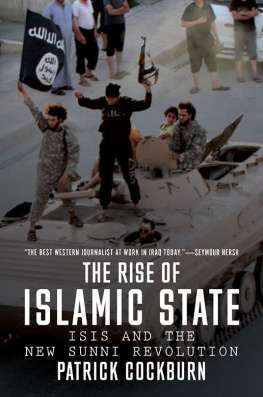Maps
Color Maps
1 . Siege of Kobane, Frontline Progression, October 2014January 2015
2 . Manbij Offensive, May 31August 27, 2016
3 . Raqqa Campaign, November 2016
4 . Operation al-Jazira Storm
The authors of this primary research on the U.S.-SDF partnership owe their gratitude and thanks to every journalist, fixer, SDF official, coalition military official, diplomat, researcher, foreign volunteer, and others who contributed to the book. Many contributed on condition of anonymity due to the sensitive nature of the topics covered, but they believed that a fair and comprehensive study on this issue was reward enough.
We especially owe thanks to serving and former U.S. and EU diplomats, military officials from the U.S.-led coalition, U.S. Special Operations Command, and the U.S. State Department for their off-the-record assistance with this study.
Special thanks are due to researcher Selah Mislim, analyst Dr. Nasr Mansour, commander Amed, senior Manbij Military Council commander Mustafa Manbij, SDF official and author of several books Polat Can, SDF media official Siyamend, SDF spokesperson Kino Gabriel, Army of Revolutionaries commander Ahmad Sultan, SDF senior official Cemil Mazlum, Manbij Military Council spokesperson Shervan Darwish, Manbij Military Council head Abu Adel, SDF commander-in-chief Mazloum Abdi (Kobani), SDF Press Centre head Mustafa Bali, journalist Sores Xelil, researcher Nawaf Xelil, journalist Ahmet Hemo, journalist Sipan Xelil, Fabrice Balanche, Alex Almeida, Nicholas Heras, researcher Mohammad Ibrahim, former volunteers Jim Matthews and Macer Gifford, and others who cannot be named.
The research was also not possible without the assistance of journalists and fixers working on northeast Syria who played a major role in the outside understanding of the SDF. This includes Azad Evdiki, Barzan Isso, Mohammed Ali, Hoshang Hassan, Heybar Othman, Red-wan Bezar, Hisham Arafat, Kamiran Saadoun, Ekrem Salih, Mutlu Civiroglu, Mohammed Hassan, Perwer Ali, and many others. The research was also aided by the Rojava Information Centre, at the time headed by Thomas McClure, and the Washington Kurdish Institute, which graciously helped not only the authors but also media and other institutes with research.
The study would not have been possible without the help and permissions of the SDF Media Centre, headed by Mustafa Bali, and the help of SDF spokesperson Kino Gabriel. The Kurdistan Regional Government also should be thanked for its permissions to cross the border into northern Syria from the Kurdistan Region of Iraq. We would additionally like to thank OIR spokesperson Col. Wayne Marotto and former OIR spokesperson Col. Myles Caggins III for their help and for arranging periods of embedding with U.S. forces in northern Syria.
Final thanks are given to Michael Eisenstadt, the head of the Military and Security Studies Program at The Washington Institute, and the many Institute fellows whose rigorous peer reviewing made this a better study.
Finally, Michael Knights would like to thank Jill and Jay Bernstein, sponsors of his Washington Institute fellowship, along with the Institutes executive director, Robert Satloff, and director of research, Patrick Clawson.
When the U.S. military fights by, with, and through a partner force, this refers to operations [that] are led by our partners, state or nonstate, with enabling support from the United States or U.S.-led coalitions, and through U.S. authorities and partner agreements.
Much of the discussion of by, with, and through in the U.S. security sector followed the commencement in 2014 of Combined Joint Task ForceOperation Inherent Resolve (CJTF-OIR), the campaign to defeat the Islamic State (aka the Islamic State of Iraq and the Levant, Islamic State of Iraq and al-Sham, and Daesh, its Arabic acronym). Particular interest has focused on the by, with, and through campaign in northeast Syria, which saw very limited U.S. forcesranging from no in-country presence to a maximum of fifteen hundred U.S. personnelwork with a capable partner force, the Kurdish-led Yekineyen Parastina Gel (YPG, or Peoples Defense Units), and later the more ethnically representative Syrian Democratic Forces (SDF). This study, which relies heavily on interviews, looks closely at the U.S.-YPG/SDF relationship, ultimately seeking to generate an accurate image of the good, the bad, the inspiring, and the ugly aspects of this military and stabilization partnership.











